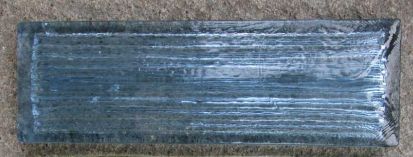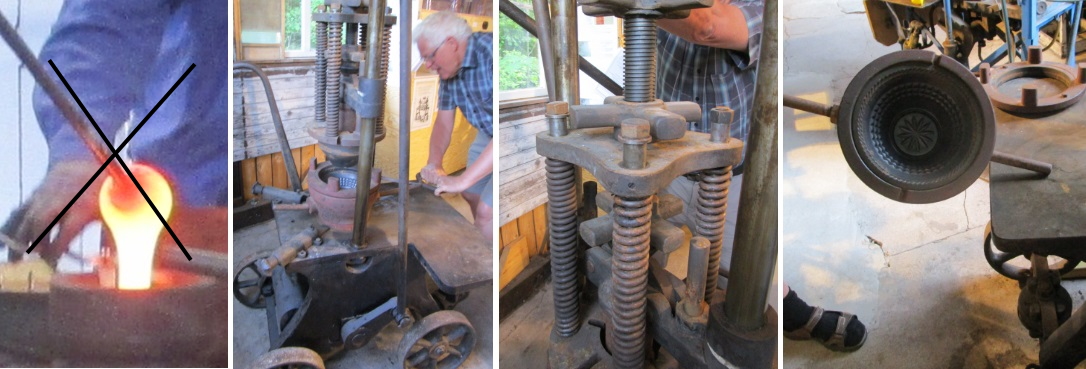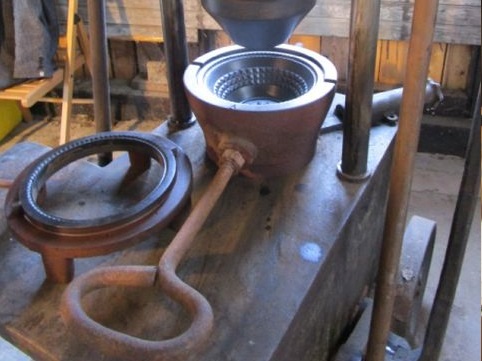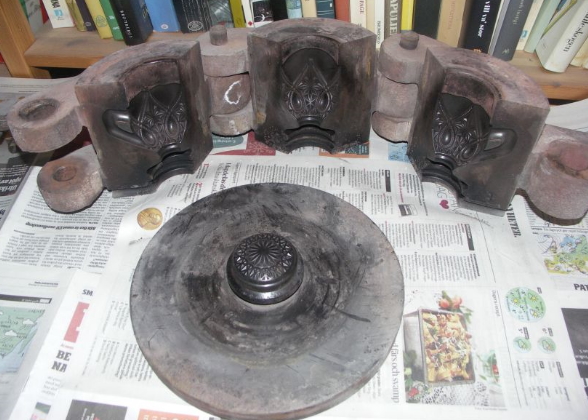
| VISIT US |
Bergdala glastekniska museum
|
|

|
||
|
For other languages we offer / för andra språk erbjuder vi
- Our sheet glass exhibition - Our pantographs - Our guilloché machines - Pictures from a pattern book - Our presses - Our semi-automatic bottle machine - Our glass artifacts |
|
— — This is an outdated page, click here for the updated page — —Our two glass presses |
|
|
The two presses already were in the building when we got access to it. That means that both presses have been used for production by Bergdala
glsbruk in historic times. Among other things, they have been used to make glass blocks for the decoration of the underground station
T-centralen in Stockholm.
(Read more about the history of glass pressing in Sweden here) Here are our presses, the manual and the pneumatic. 
|

|
||
|
One of them is completely manual. It normally was attended by three, sometimes four persons
• The gatherer gathers molten glass from the furnace, and brings it to the press mould • The presser first takes care of the mould: cuts the glass when the correct amount has been delivered, puts on the top ring, pushes the mould in under the plunger. He then manoeuvres the plunger. He must press hard, to make the hot glass fill all crevices of the mould. For bigger pieces, sometimes it needed two persons for the pressing. • and lastly the taker-in who takes the pressed product to the annealing. 
Here in our museum you are invited to try out the press. We don't have any hot glass, but feel the moulds (heavy!), try putting on thed top ring
(remember that in reality all pieces were very hot, some 300-400 degrees: it was easy to get bunt!), to slide the mould all the way in under the
plunger (all the way to the stops!). Try out the pressing (the plunger has to go down and compress the springs a couple of centimetres, and
keep it down for 5-6 seconds).
To get the piece out of the mould needs a special technique: tilt the mould against the back spike, turn it over and collect your (imaginary) bowl. (But be careful: the mould is heavy, don't drop it on the floor!) The other press (the blue one) was pneumatic (assisted by compressed air), which made the presser's work much easier. |
|||
|
We have a couple of complete moulds, two for simple bowls and one "open and shut" for a creamer called HJÄRTA (heart. We have been give the latter from Målerås glassworks (THANKS)! More pictures of complicated press moulds can be seen on the page about "when the press came to the glassworks". |
|||

|

|
||